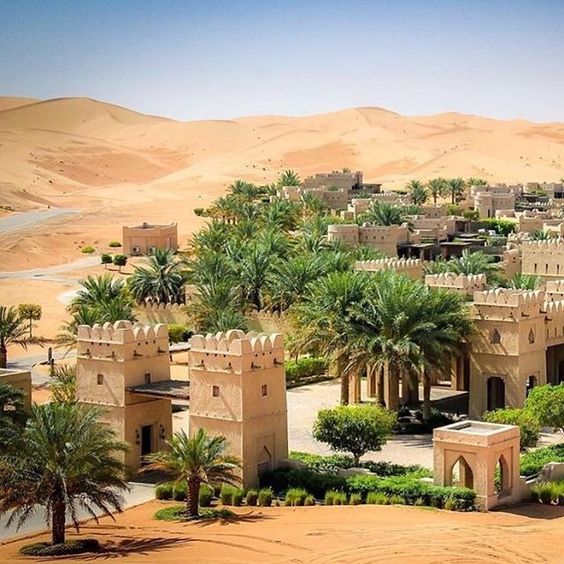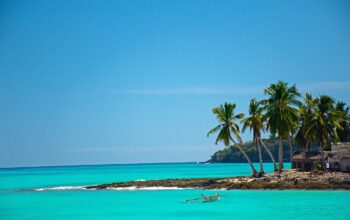Ghadames, also known as the "pearl of the desert", is so perfectly resistant to the extreme temperatures of the Sahara that its former residents keep returning there.
Ghadames is located 600km southwest of Tripoli, deep in Libya's arid Tripolitania region. The soaring white-ochre walls of this palm-fringed city may seem inconspicuous at first glance, but they serve an important purpose for its inhabitants.
The name Ghadames has been known for at least 2,000 years, although its current compact structure was developed by Muslim Arabs in the 7th century, and over the centuries its name has spread. Perfectly designed to combat the desert winds and harsh climate of the northern Sahara (UNESCO World Heritage Site), this oasis city – also known as the “Pearl of the Desert” – is one of the Sahara’s greatest architectural gems and a magnificent example of environmental planning.
With temperatures reaching over 40°C (peaking at 55°C in summer and dropping below zero in winter), it consists of a labyrinth of dark, shadowy corridors, winding less (arched alleys covered with palm wood), with occasional skylights through which rays of sunlight occasionally stream in. The number of vents in the walls reflects the importance of the street, helps with orientation and also keeps the temperature around 20°C,” Manshour explained. The idea behind the curved passages is to stop the flow of desert sand gusts.

The interior walls, which shine with a white protective layer of lime-tiled tiles, are built of sun-dried mud bricks. This mixture of clay, sand and straw is layered over stones, which insulate them from moisture. Dr Susannah Hagan, emeritus professor of architecture at the University of Westminster and an expert in green architecture, explains why this construction technique is so ingenious: “The secret is in the walls: thick walls of earth or stone, slow down the penetration of the sun’s heat. The interior of the building then radiates that heat back into the cold sky during the day and at night.” By morning, the walls have cooled enough to start the protective cycle again.
Clever use of available building materials ensures maximum comfort with minimal resources. In the desert, this means cold without air conditioning and heat without heating.
We continued past doors made of simple palm trunks, some studded with brass, as well as low arches, curved niches, and Dakar – built-in benches – which, ideal for lounging, usually mark the nearby mosque (there are 21 of them, although only a handful are still used, and that only on Fridays). Sometimes the arches were carved, sculpted, or decorated with delicate paintings (the Hand of Fatima, the star, intricate geometries), adding to the mystery and appeal.
Typical of Ghadames are doors made of simple palm trunks, some studded with brass, as well as low arches, curved niches and Dakar – built-in benches – which are ideal for lounging. They usually mark a nearby mosque (there are 21, although only a handful are still in use, and that only on Fridays). Sometimes the arches are carved, sculpted, or decorated with delicate paintings (the Hand of Fatima, the star, intricate geometries), adding to the mystery and appeal.

Medina
In the center of the Medina are two arcaded squares surrounded by giant mulberry trees. They were once the site of slave markets. In reality, it was the centuries-long trade of sub-Saharan men, women, and children that infamously fueled the city's economic boom and ultimately brought about its downfall when slavery was abolished in the 19th century.
But long before its demise, this caravan crossroads flourished magnificently as a center for itinerant traders, trading exotic goods such as ostrich feathers, gold, ivory, civet, brass and tin, as well as weapons and horses. Ghadames is strategically located where Tunisia, Algeria and Libya meet today, and it was from here that laden camels would be transported further west to Timbuktu, south to Ghat and Bornu, or north to Mediterranean ports. The city became a key meeting point for civilizations, and its Berber inhabitants (known locally as Amazigh) of Ghadames were highly revered.
It flourished until the abolition of slavery, nominally subject to Ottoman rule through interludes of Italian and French occupation in the early 20th century. In the 1880s, water shortages and lack of modern sanitation led to Muammar Gaddafi to order the construction of a new city next door.
Today, Old Ghadames has no permanent residents, although during the scorching summers its ecological superiority compared to the concrete apartment blocks of the new city attracts a steady stream of Amazigh and sub-Saharan residents who return to its mosques and teahouses to enjoy its cool beauty.

They also tend to many of the 121 family gardens, which are irrigated by a complex system of canals from artesian wells and the underground spring of Ain al-Faras – the legendary origin of the oasis.

HOW TO GET THERE
While the political situation in Libya remains unstable, it is possible to visit Ghadames from Tripoli with a tour organized by a local company such as Wadi Smalos Travelers should always check local government travel advisories before booking a trip.


